Icebergs, Jokulsarlon Glacial Lagoon
There are some places in the world that have to be seen to be believed. In such places, descriptions such as “amazing”, “fantastic”, and “awesome”, inevitably fall short. These are the places in the world where words fail, and the eyes are left with a visual phantasmagorical feast. These are the destinations that provide once in a lifetime experiences; and these are the destinations that make travelling worthwhile and inspirational. One of these destinations is the Jökulsárlón Glacial Lagoon in Iceland. The Jökulsárlón Glacial Lagoon has been formed by a melting tongue of the nearby Breiðamerkurjökull glacier. In this respect, nearby is now a relative term in 2015. Originally, this tongue of the Breiðamerkurjökull glacier touched the Atlantic Ocean. However, over the last seventy, the glacier has receded some 1.5 kilometers, melting, and in the process, forming the lake.
Jokulsarlon Glacial Lagoon
Even though there are many stupendous things about the area, this last fact is something that bears repeating: in 1948, the glacier was 230 meters from the Atlantic Ocean. In 2015, the glacier is now some 1.5 kilometers away from the ocean, and has formed a giant lake that is some 18 kilometers in area (6.9 square miles). As of 2015, the glacial lake is also Iceland’s deepest lake with a maximum depth of 248 meters (814 feet). Today, the glacial lake is fed by icebergs that “calve” from the glacier’s edge, and then float through the lake, and to the Atlantic Ocean. Along the way, such icebergs drift through the lake, and then ultimately the river mouth, where they may then break up in the water, or end up on the black sand shores of the Atlantic Ocean.
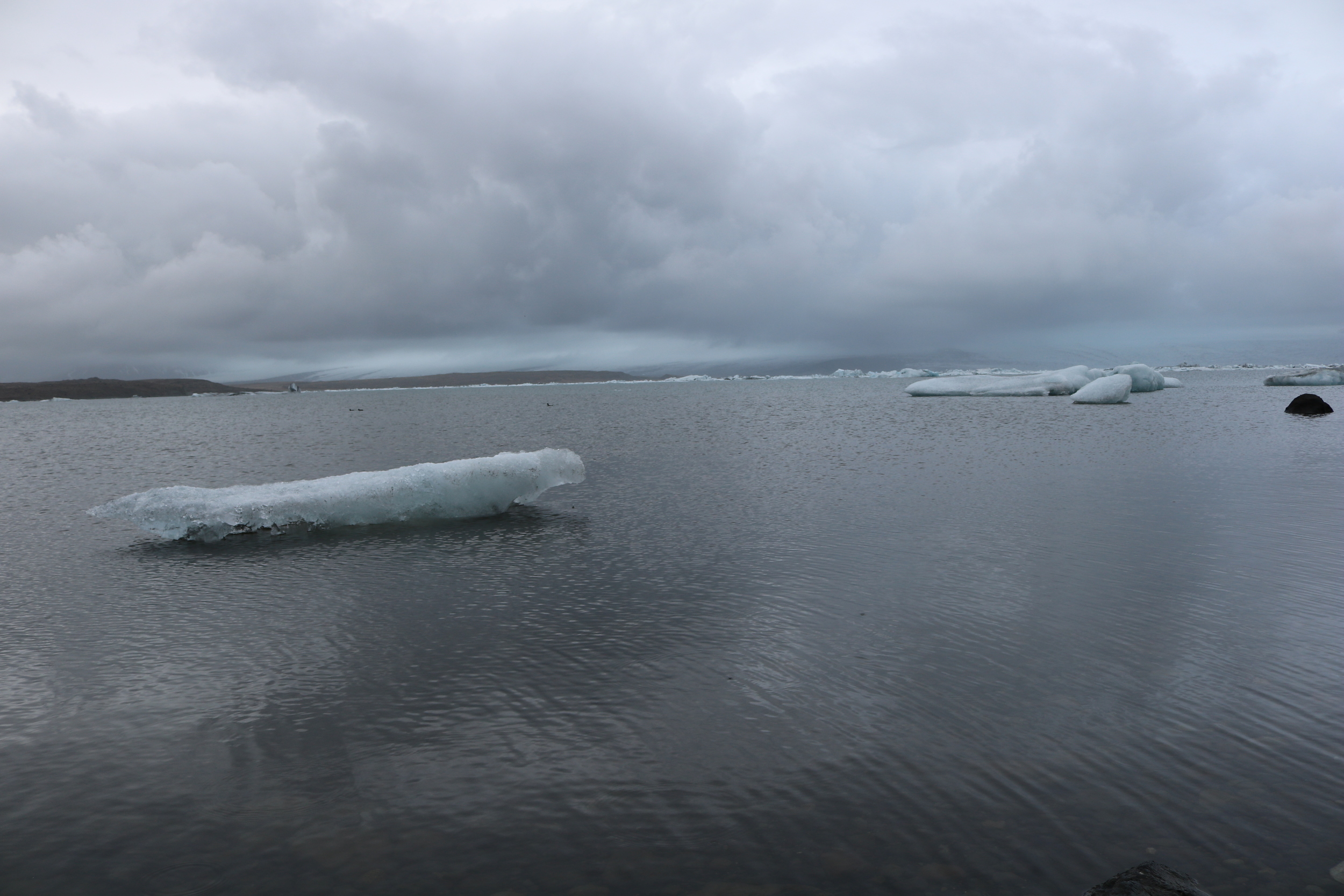
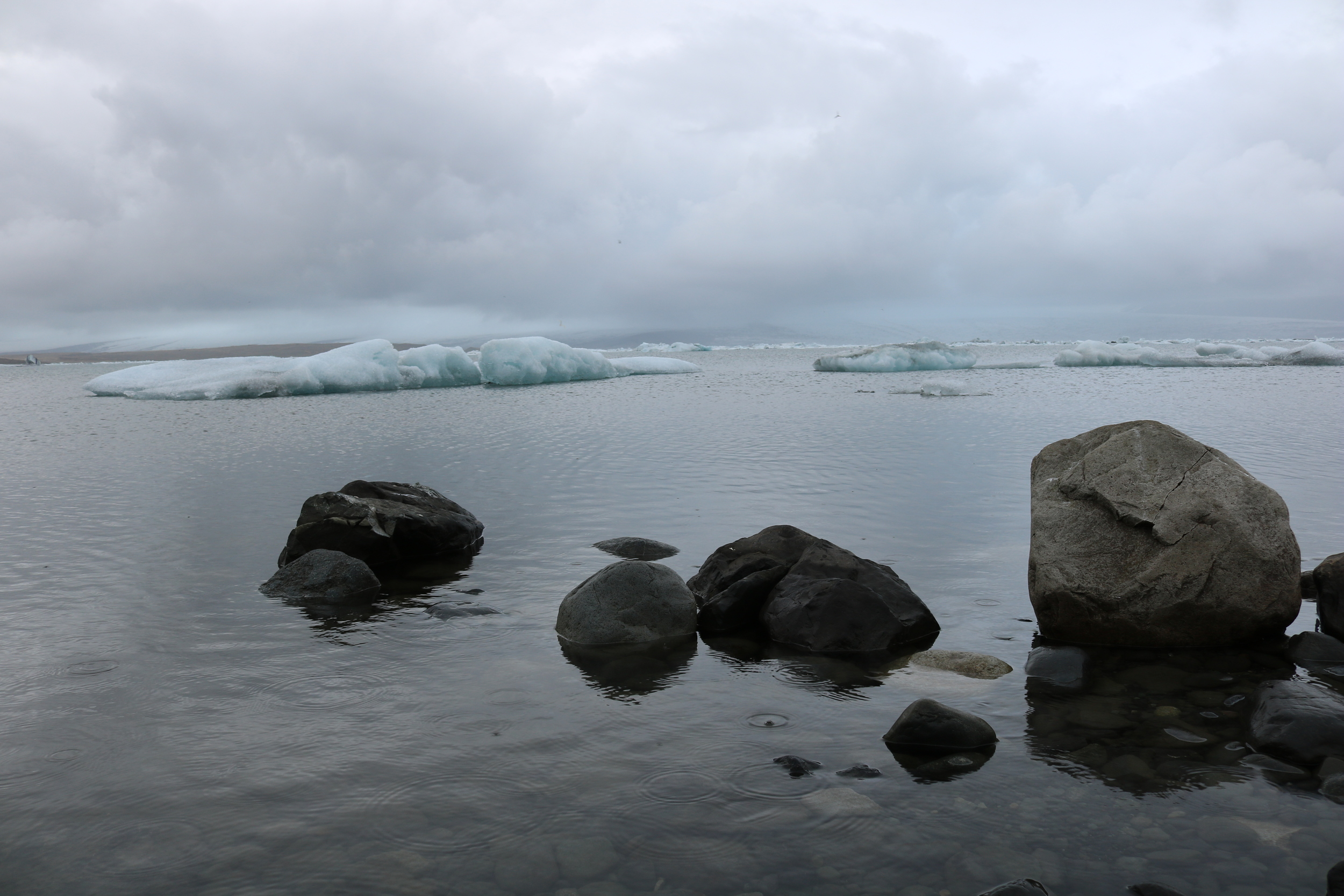
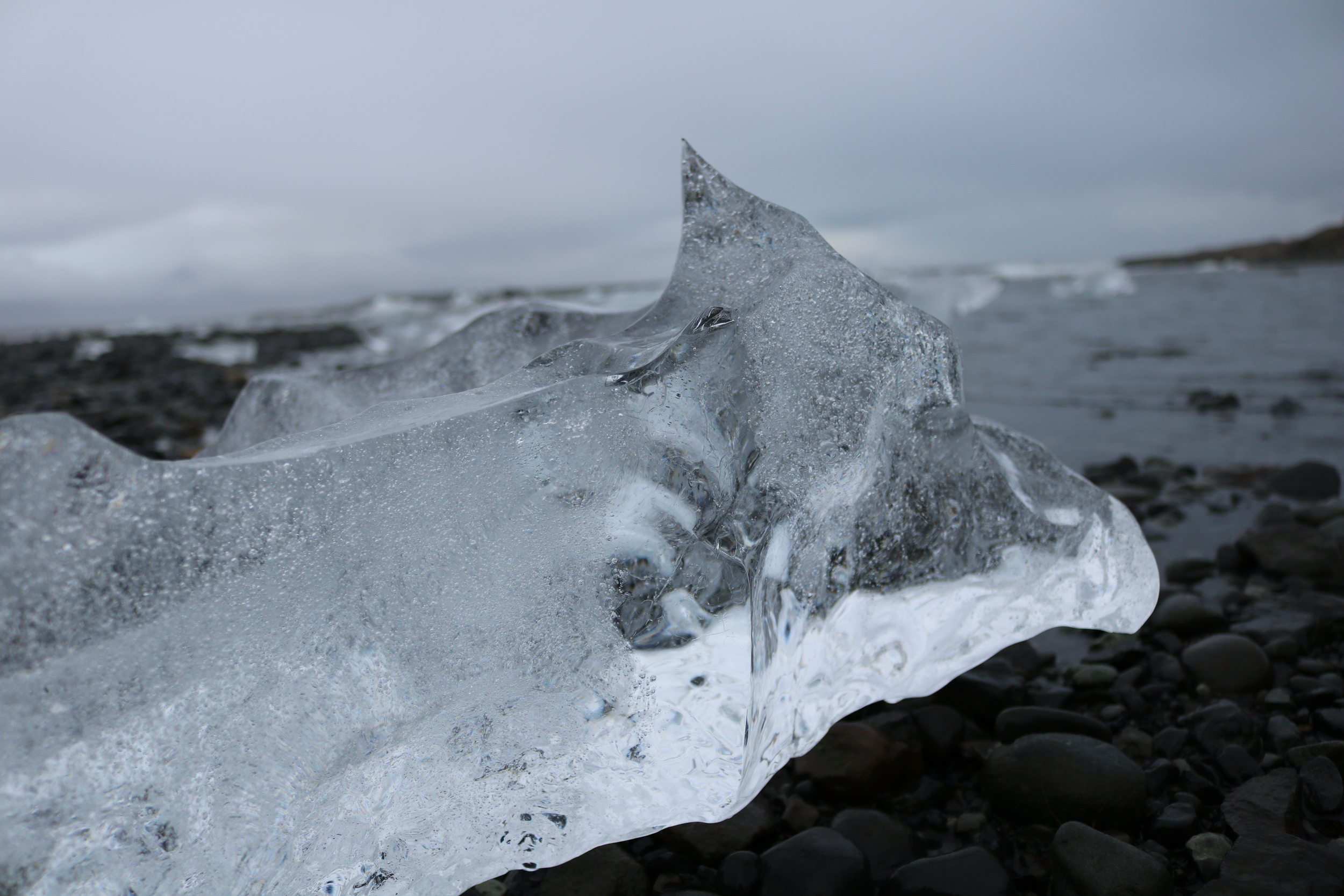
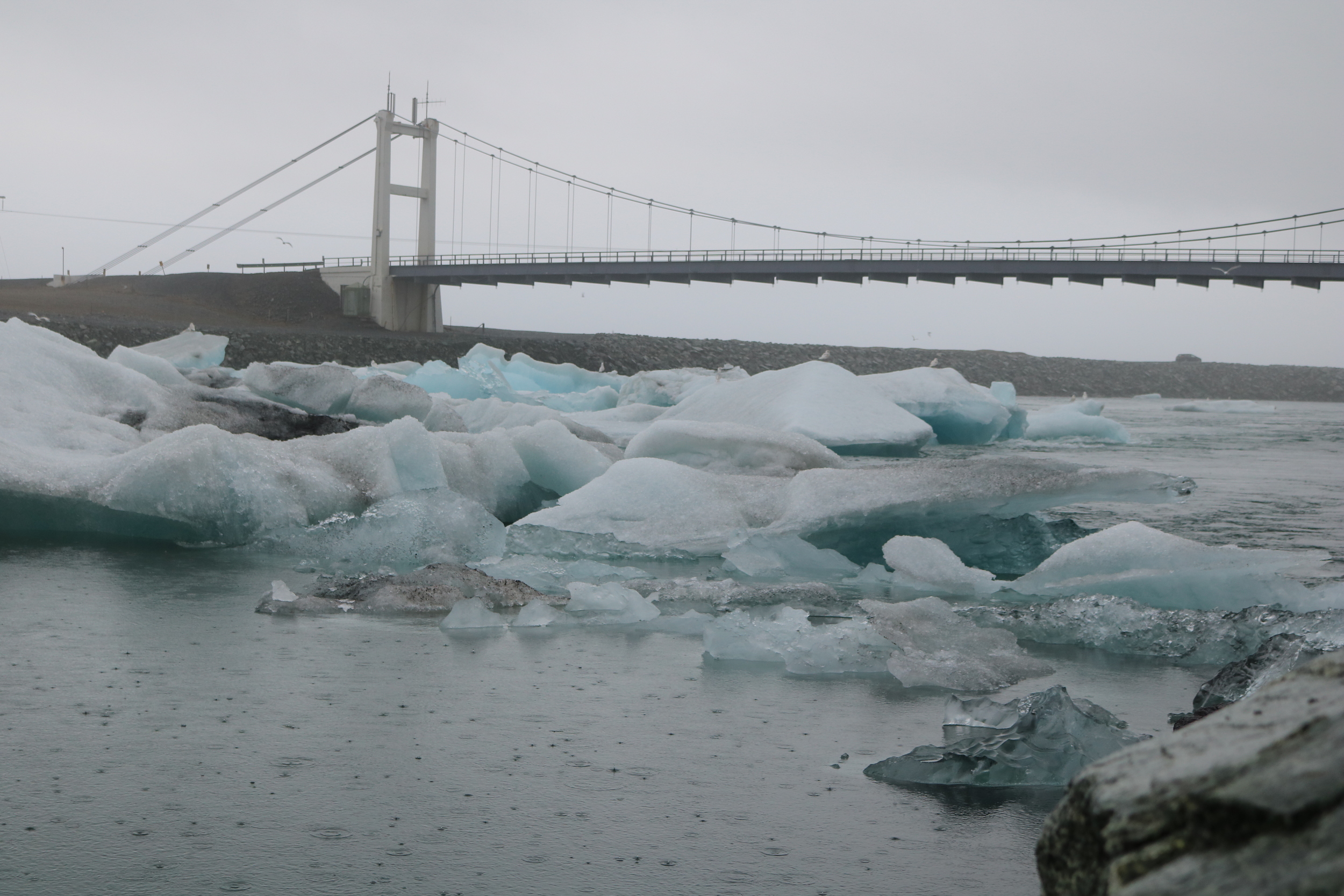
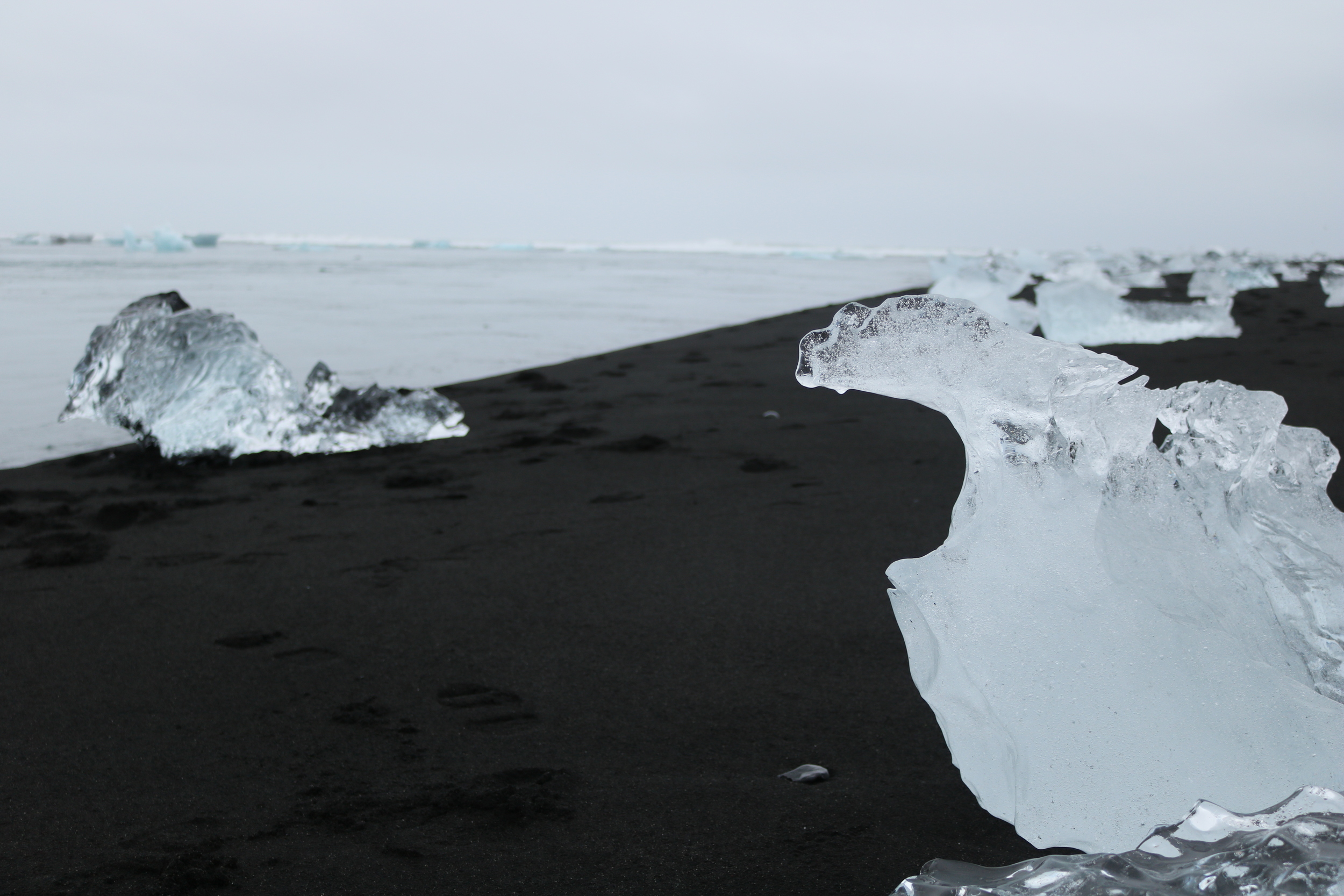
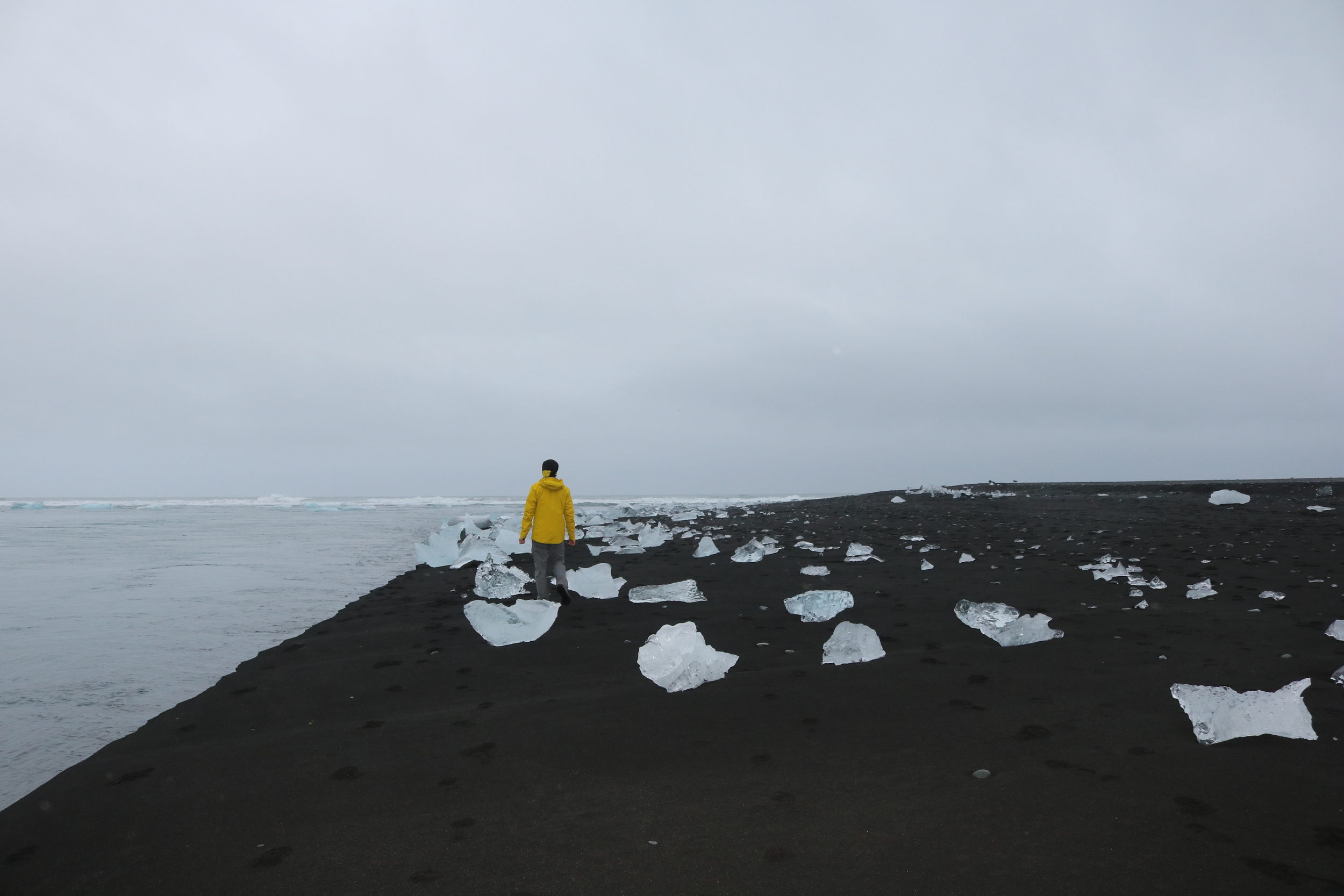

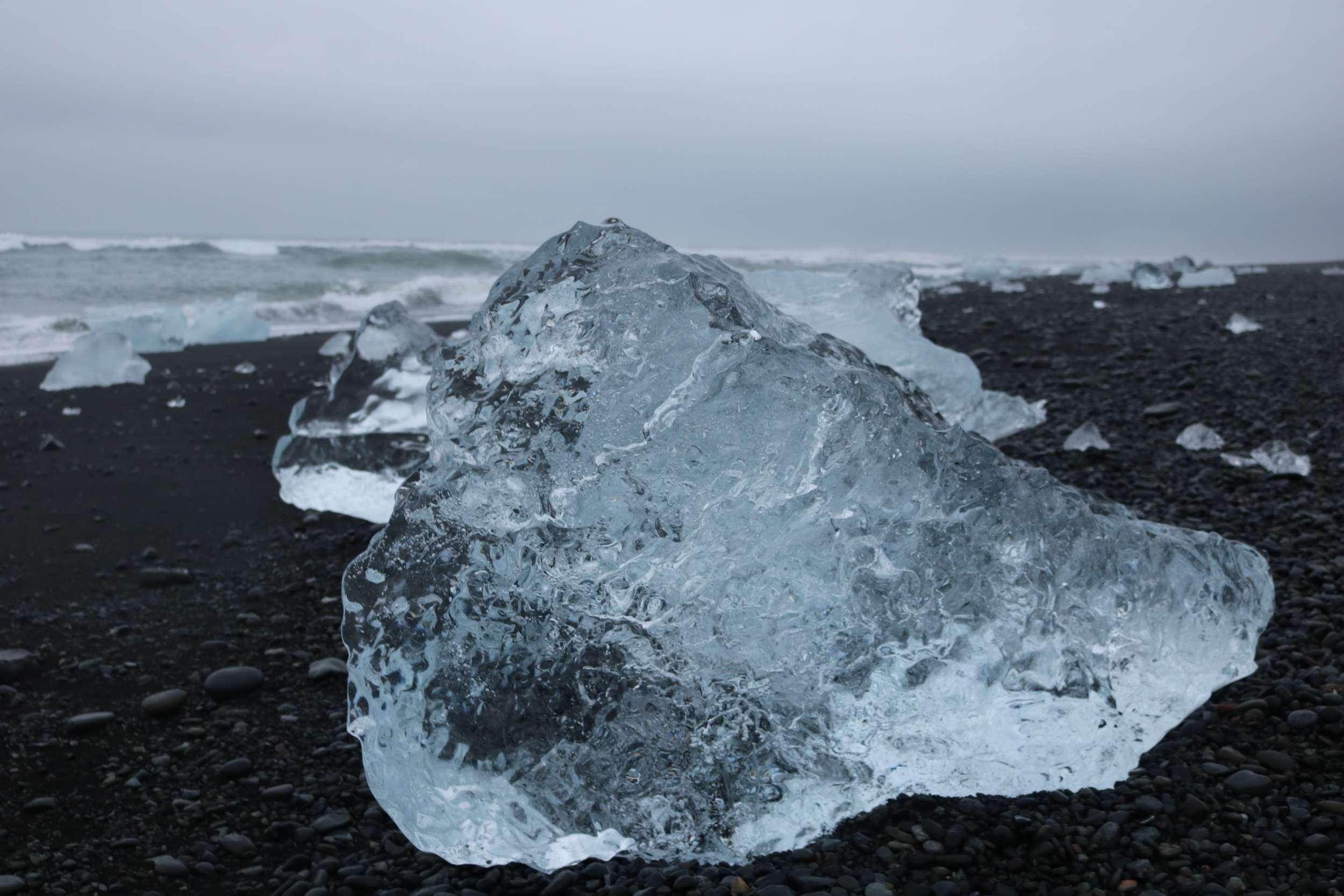
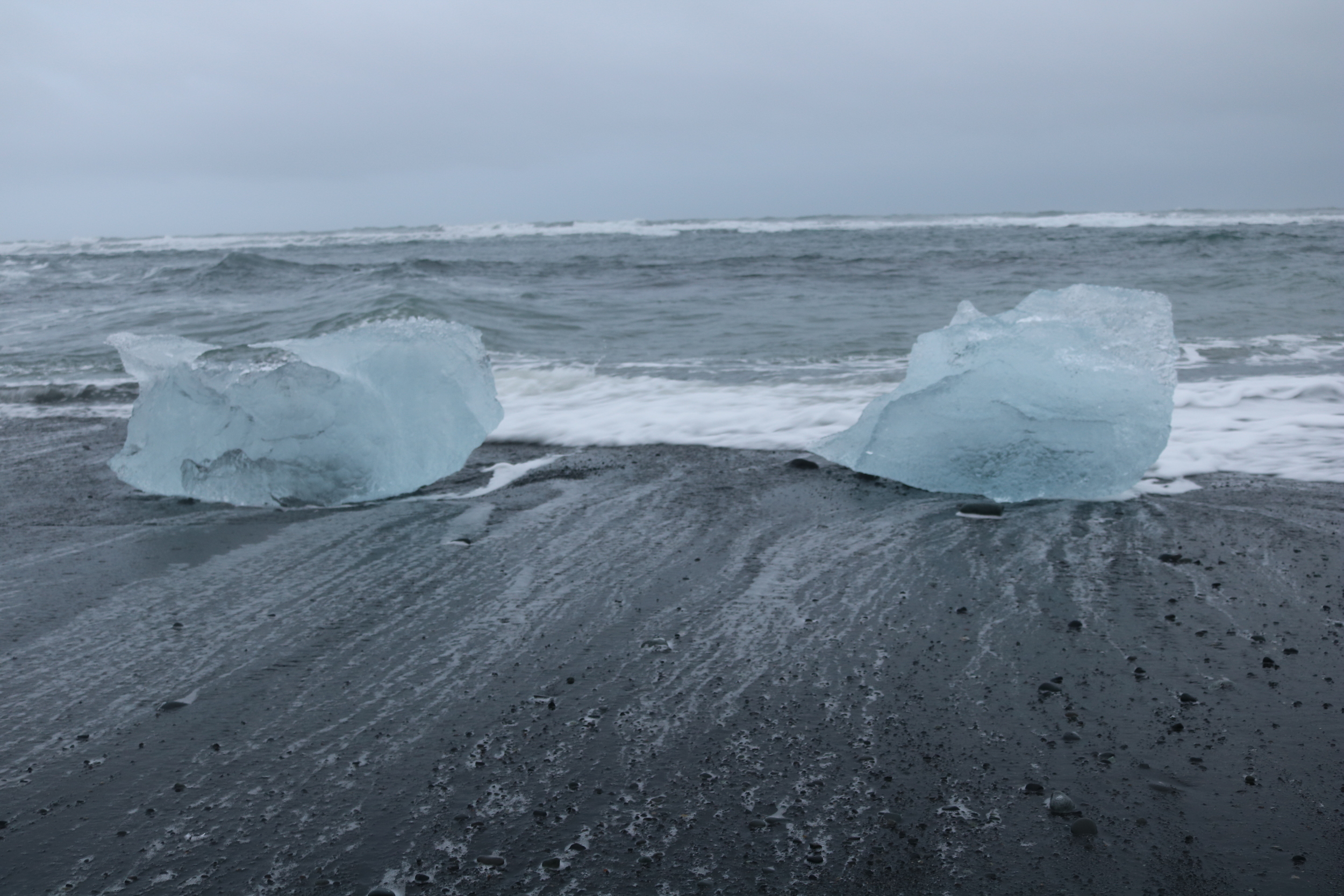
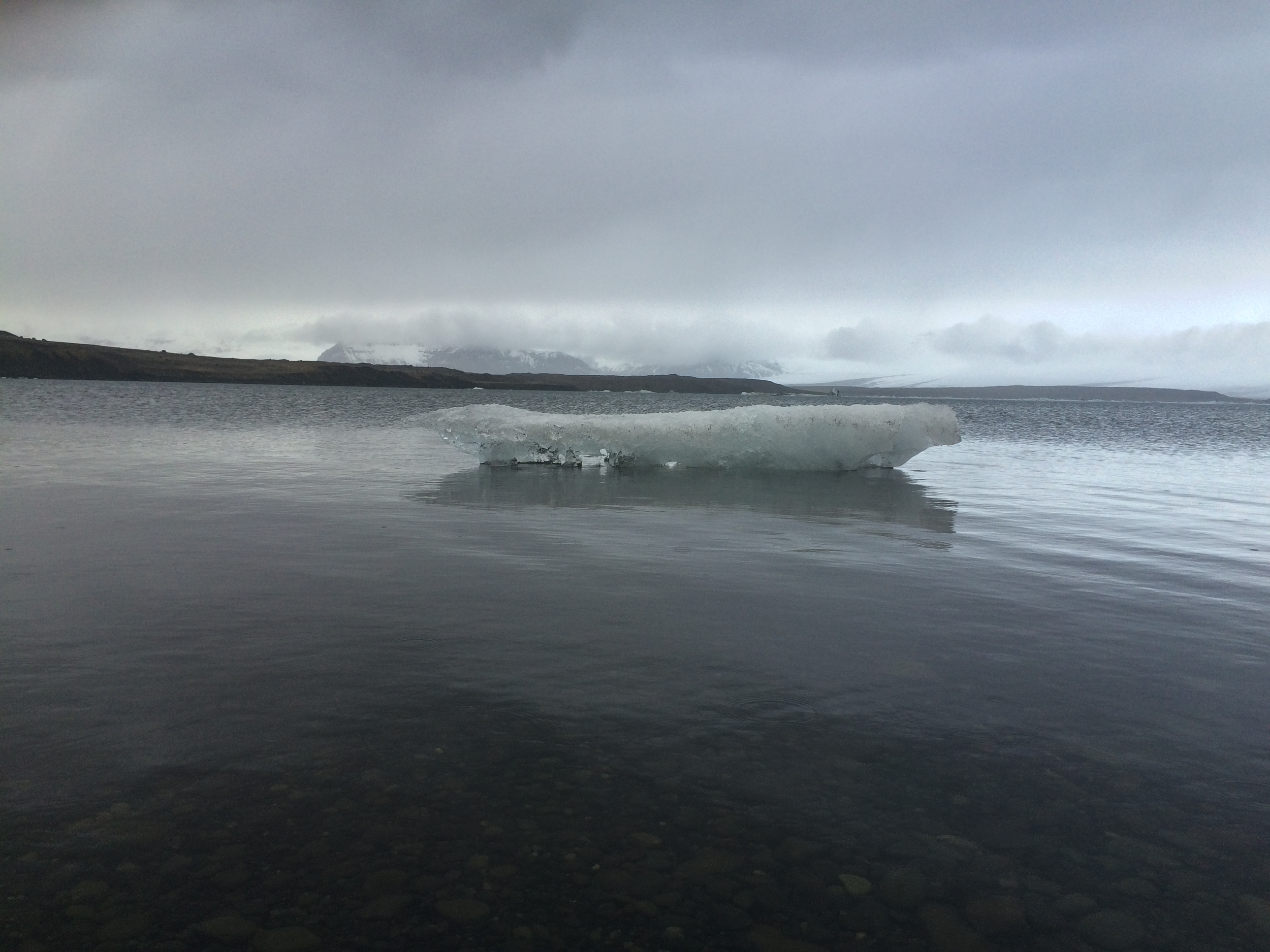
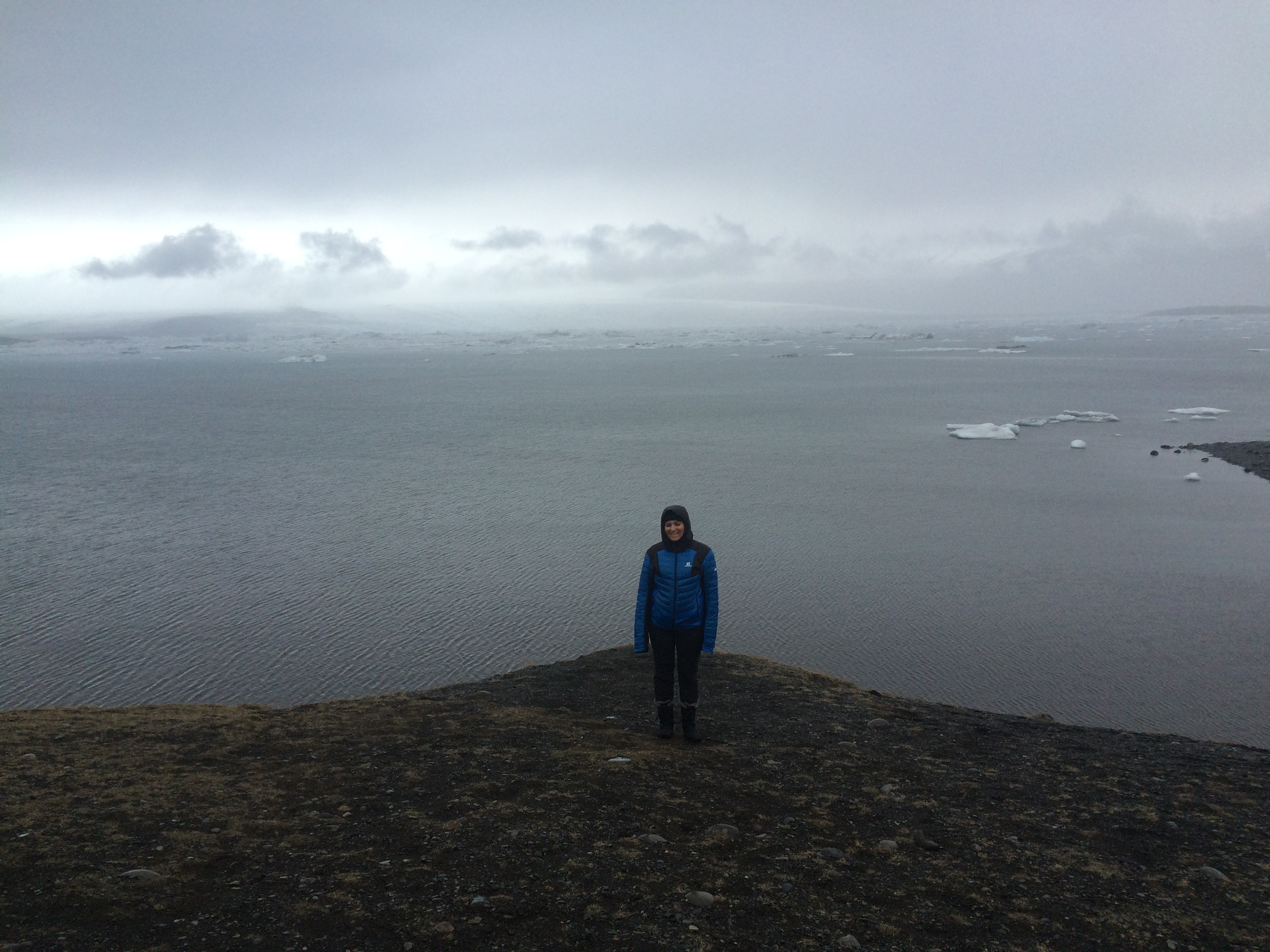
Directions: The Jökulsárlón Glacial Lagoon is located some three hundred and seventy two kilometers (372) to the Northeast of Reykjavik off of the Route 1 (the Ring Road), the main highway in Iceland that circles the island. Although there are not many towns in that region of Iceland, it is located between Skaftafell and Höfn. From Reykjavik, without stopping, it is approximately a four and one half hour one way drive to the lagoon. From the Route 1, the Lagoon is readily apparent, especially as there is a large bridge that crosses the river mouth. The glacial lagoon is also part of Vatnajökull National Park.
Icebergs, beach near Jokulsarlon Glacial Lagoon
Tips: While Jökulsárlón Glacial Lagoon is not a “hidden” or “secret” spot, the time, and effort it takes to get to the lagoon make it an adventure. The lagoon is in remote location in Iceland, which, while beautiful in itself, is also a remote destination in the world. Travelers to the area should be aware that while there are guide services in the area that do offer boat trips during certain times of the year, generally, the area is fairly remote, and has no services, including gasoline, food, water, or various other comforts. As such, travelers should be prepared for the remote nature of the lagoon.
Iceberg, Jokulsarlon Glacial Lagoon
While the lagoon itself is primarily accessed through parking areas on the North and South sides of the river mouth bridge, my tip to visitors is that the best portions of the lagoon can be seen without crowds or people with a little effort. From the South, heading North from Skaftafell, there are numerous trailheads that travel through the glacial moraine to the lagoon some two to three kilometers prior to the bridge. These trailheads and parking areas are marked, and are also readily apparent from the Route 1. While these trails alongside the lagoon offer great views of it, and the nearby glacier, hikers should use caution in traversing the area, as they are all unmarked, and for the most part, much of the terrain looks somewhat similar.
In addition to the trails around the lagoon located to the South, visitors can also walk across the Route 1 along the river towards the Atlantic Ocean. On both sides of the river – North and South, one is sure to find hundreds of icebergs small and large along the black sands of the coast. Although I could wax poetic about the location, I think the pictures in this article do a better job of demonstrating the wild beauty of the area than I ever could. This is truly a unique spot in the world, for seeing the geologic history of the past, and the rapid change of the future. While it remains uncertain how much longer this area will look the way it does today (2015), it is something that visitors must and should visit if they have the ability to do so while in Iceland, and is something that a person will not regret.
A quick view of some of the icebergs near the Glacial River Bridge in May of 2015.
